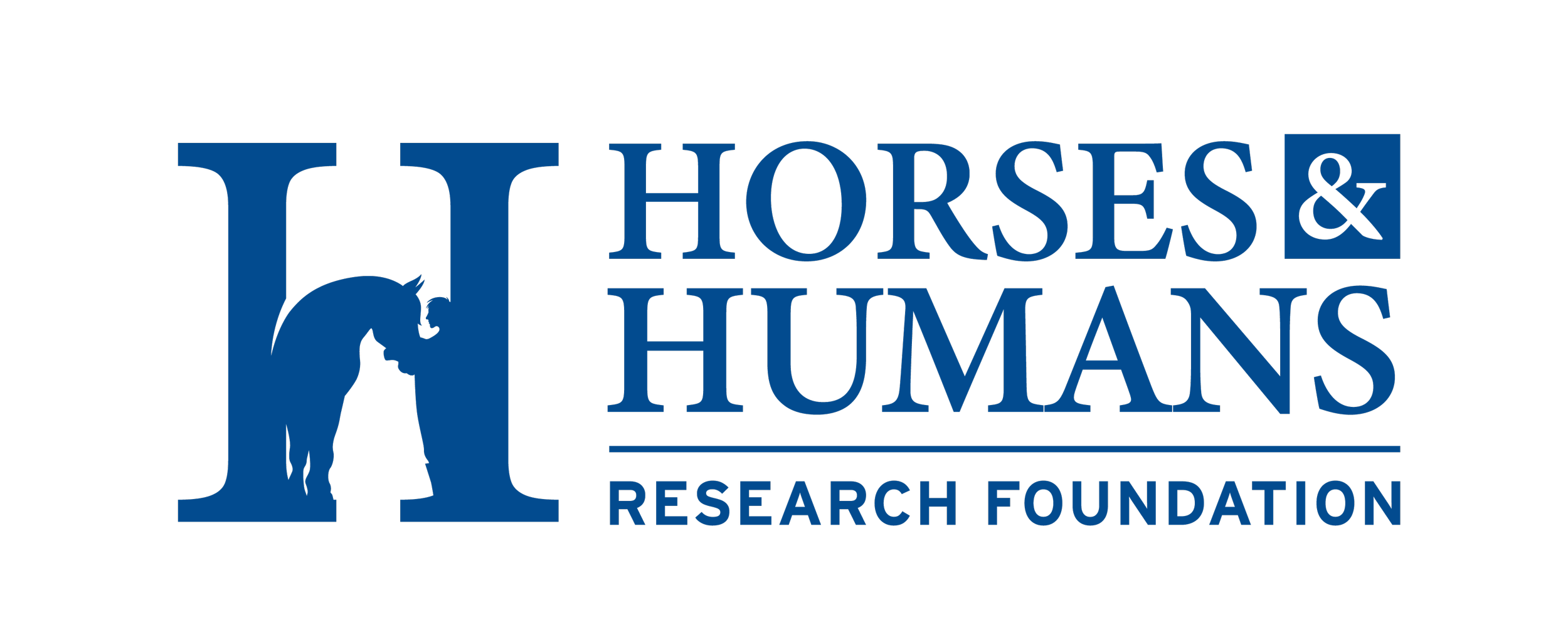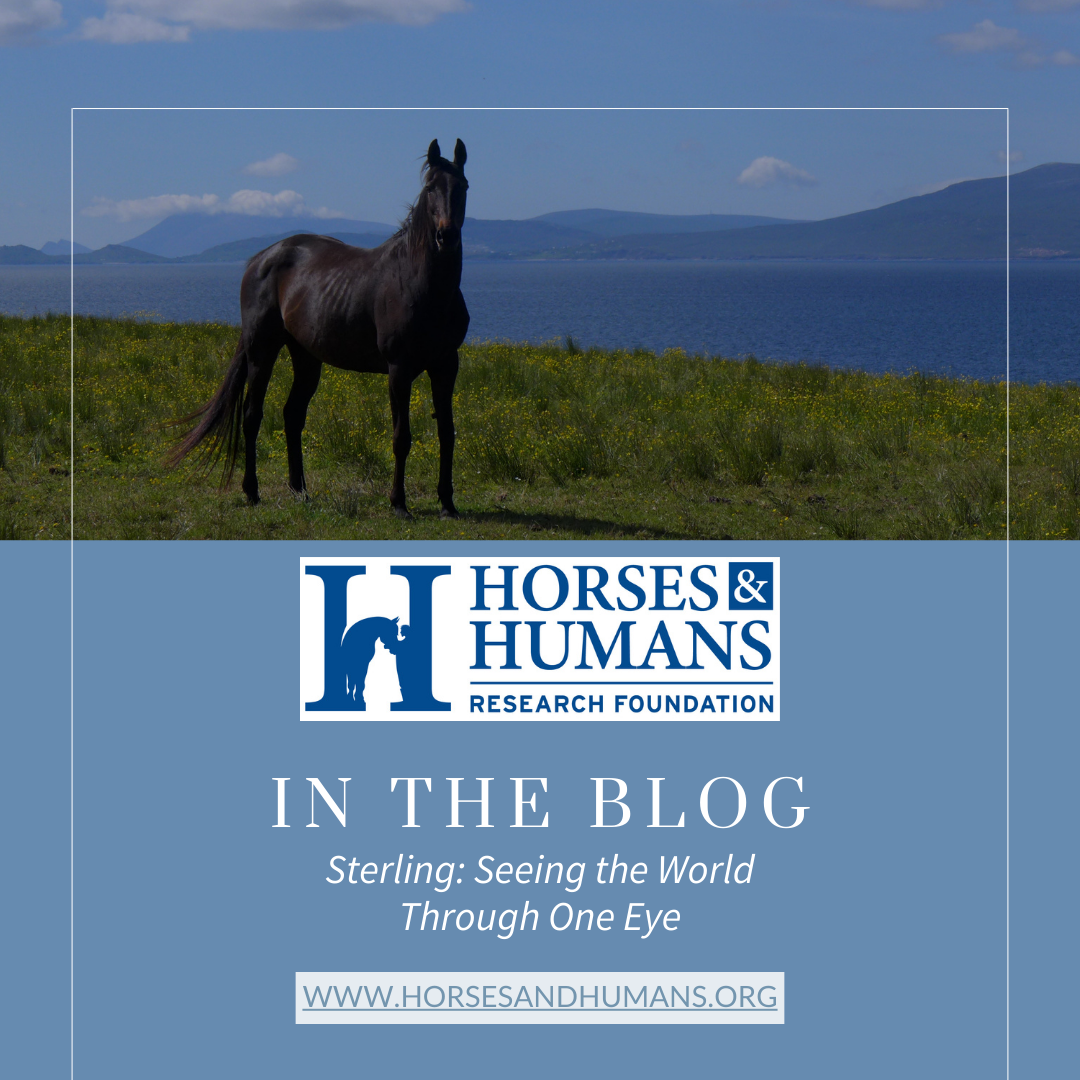Sterling: Seeing the World Through One Eye by Kathleen Choe
Sterling: Seeing the World Through One Eye
by Kathleen Choe
I am a handsome quarter horse and Copper’s best friend. My human named me Sterling Silver because I am black with flecks of silver in my mane and tail and on my rump. When I was a young horse, I did not receive adequate care. As a result, I lost my right eye to an untreated infection. I quickly adjusted to having one eye and still lead the herd well by relying on my other senses of smell and hearing on my blind side. Because I am a prey animal, my eyes are set far apart on the side of my head so I can easily scan the environment for predators and other threats. My eyes were designed for scanning for danger rather than picking out fine details. Because I can’t see on my right side, I often turn my head all the way around to look on that side of my body. When I am too concerned, I can rely on my excellent hearing and sense of smell to detect activity on the right without having to turn to look.
My remaining eye is eight times larger than my human’s eyes; in fact, horse’s eyes are the largest of any land mammal! This means I have a very large retina as well.[1] My larger retina magnifies everything I see so objects that are closeup look 50% larger to me than they do to my human. Sometimes my human ignores things that I think she should pay attention to, so I let her know with a snort or head toss that something is coming or happening that I am worried about. Then she gives us time to explore and figure out what is going on and waits until I am assured no one is in danger before continuing our activity.
My eyes are so cool! I can work independently of each other and see different views at the same time. When I had both of my eyes, I had a range of vision that was 350 degrees. I could see all the way around my body except for right behind my tail and right in front of my forehead and under my muzzle. If someone touches my face or nose from in front of me, I can’t see their hand coming and get startled, so I feel more comfortable when someone reaches out from the side where I’m sighted or uses their voice to let me know when they are coming from my blind side.
Because I see images as separate on both sides of my body, it confuses me when an image moves from one side of my body to another, as I think it is a completely different image. Sometimes a dog follows me on the trail rides I do with my human, and I get used to it being on my left, but if it suddenly shows up on my right I startle and must figure out what it is all over again. My human assures me that the dog living next door is a little chihuahua, but my larger retina magnifies the creature until it looks like the size of a wolf and much more threatening, especially when it makes a lot of noise (my human calls this “yapping.”) This monocular vision also affects my depth perception so I’m reluctant to walk through puddles and marshy areas because I can’t tell how deep the water is.
I can see movement even in low light conditions, but only in shades of blue and green (which are my favorite colors anyway, because well, grass!)
I look for patterns in my environment, so even if I am used to seeing an orange cone by the gate to my paddock, I may spook if you move the cone to a different location. It seems like a new object to me, and I have to explore it and get used to it being there. There is a pasture I often walk by with my human and sometimes it has cows in it but other times it doesn’t, which is so confusing. Like, where do the cows go?? Then, next time, POOF, they're there! I like to know what to expect so this unpredictability and variability causes anxiety.
I can see moving objects better than stationary ones. My eyes can’t adjust quickly to changing light conditions so I am hesitant to walk into the dark barn from the bright sunlight; I can’t tell what is inside! It takes 45 minutes for my eyes to adjust to different light conditions! I must remind my human not to rush me into a situation with different lighting (or any new situation, for that matter!)
I have a job, too. I am proud to be an equine-assisted psychotherapy partner with my human. Sometimes the people she helps want to spend time with me because they say they can “relate to my disability” and admire how I have overcome the loss of one of my eyes. I don’t know what they're talking about, I'm not disabled due to my adaptability with other senses. I see myself as special – I am comfortable with who I am and how I see the world!
Did you know:
Humans rely on categorical perception to organize our world; that is, we organize sights and sounds into meaningful groups. Horses are not capable of this. For a horse, a different view of even a familiar object makes it an entirely new phenomenon. We lump any number of garden hoses into the same category, regardless of color, length, or how they are stored. Horses lack this ability and will see even the same garden hose they walk by every day near the barn as a new object to be feared and/or explored depending on whether it is in the same position it was the last time they saw it. If it was rolled up in a certain way the first time they walked past it, and a different way the next time, it is a completely different object from their perspective.[2]
[1] https://www.extension.iastate.edu/equine/vision-equine
[2] https://equusmagazine.com/behavior/eye-eye-3102

